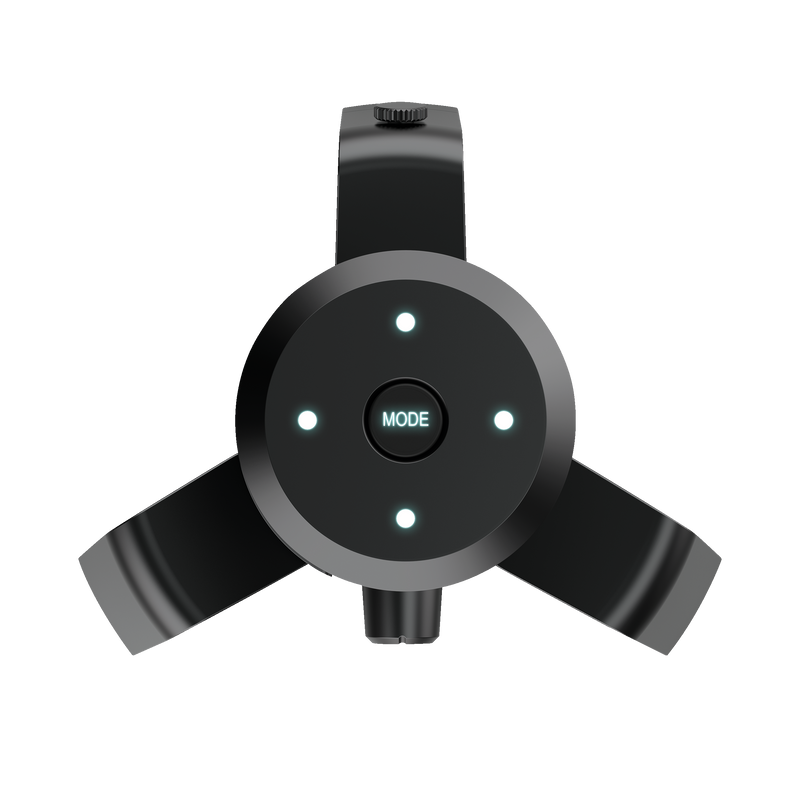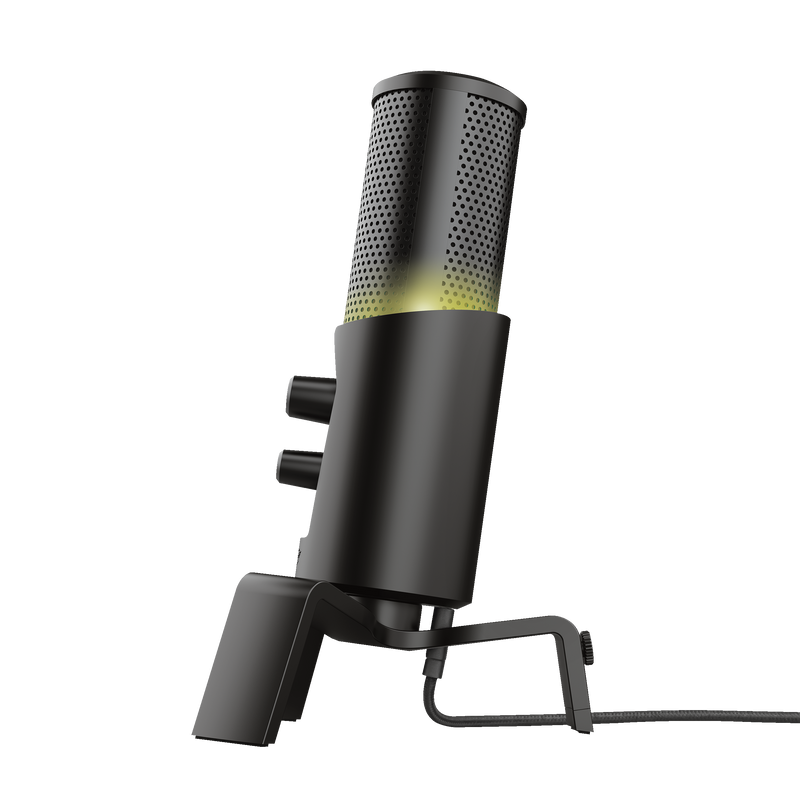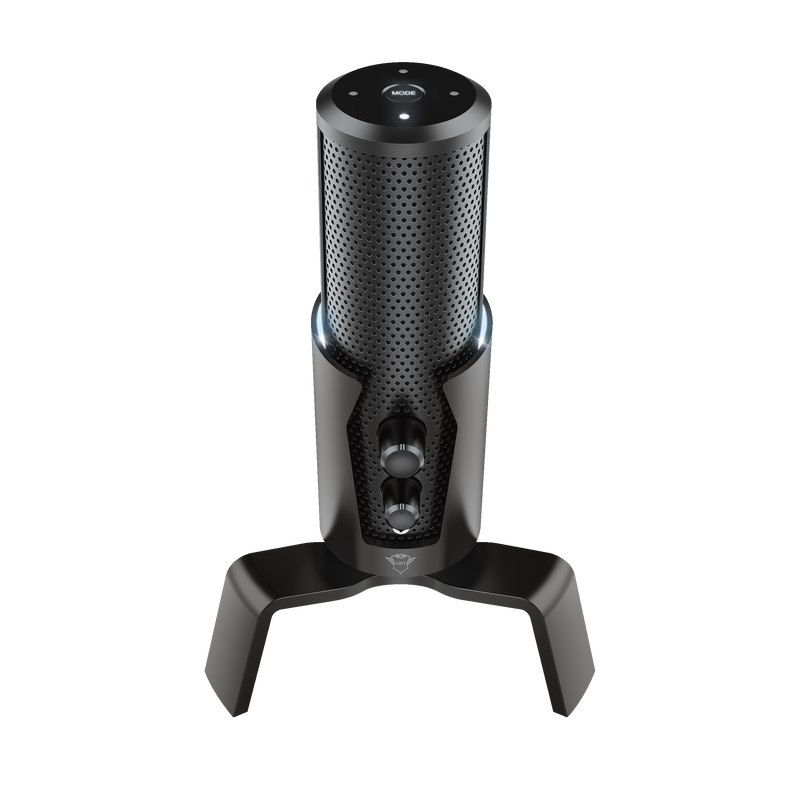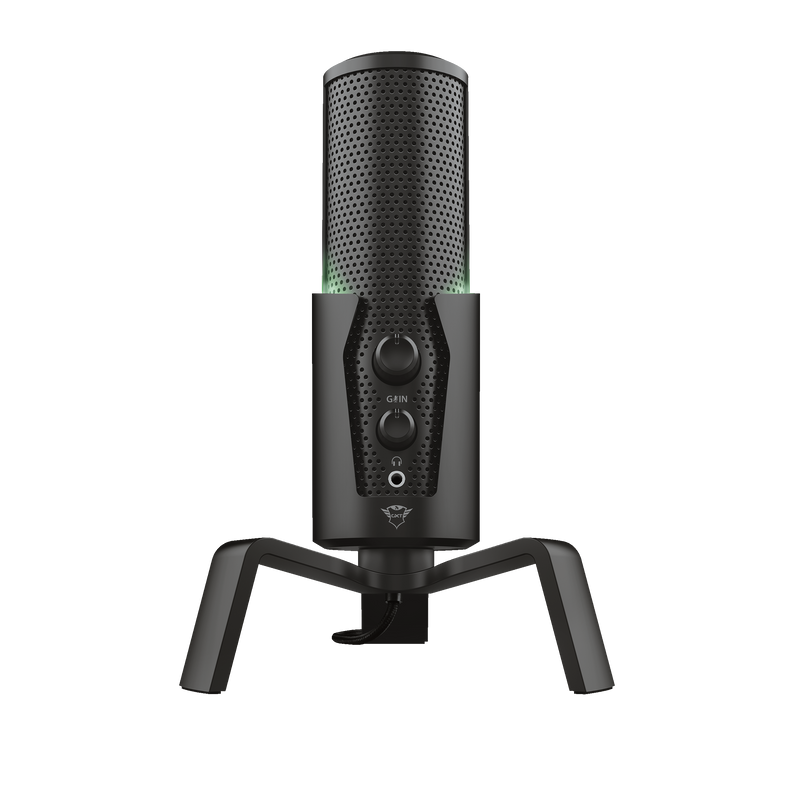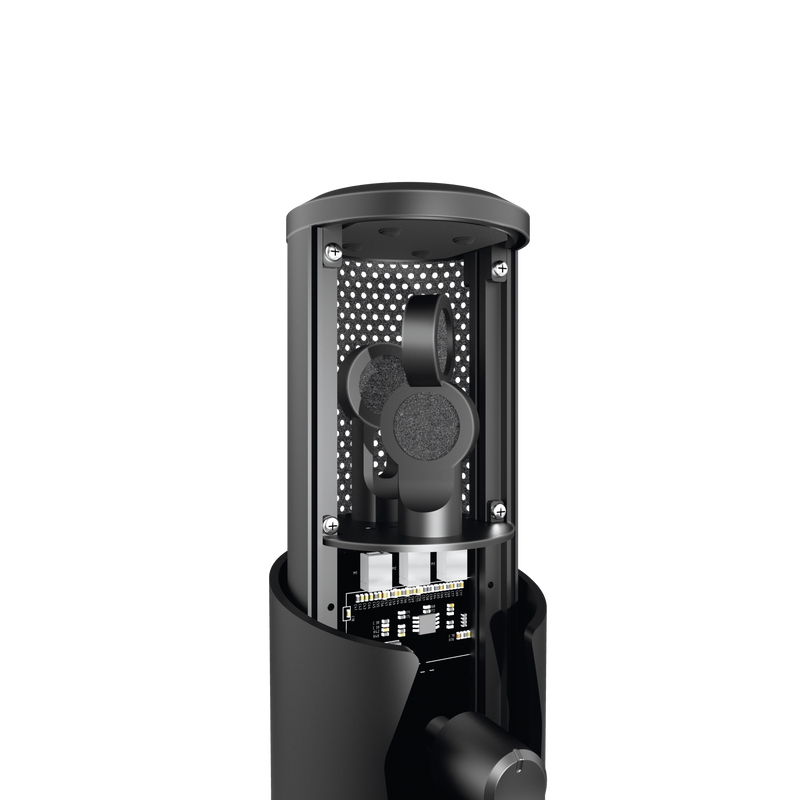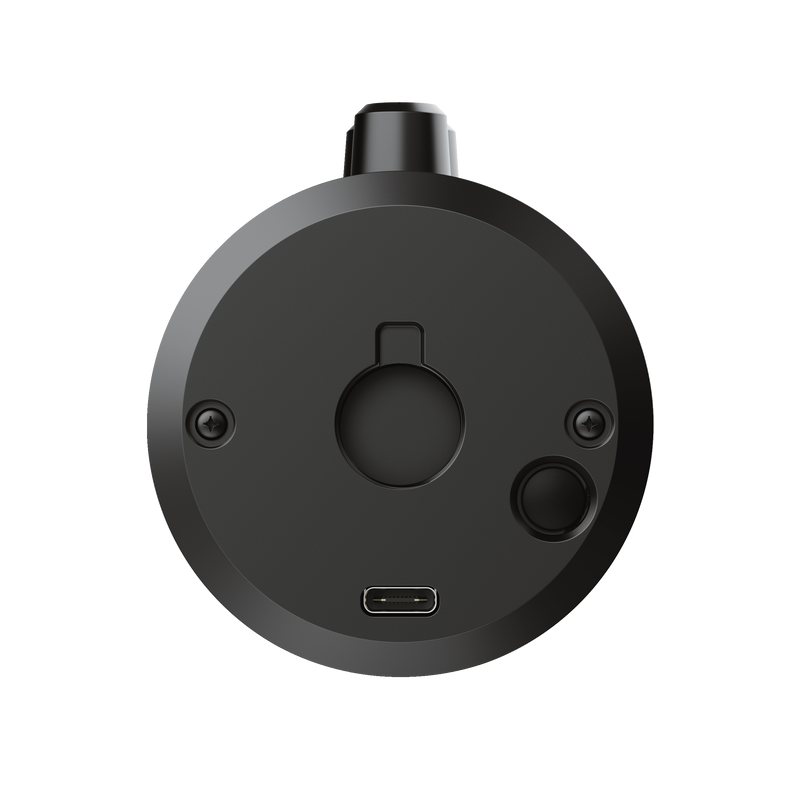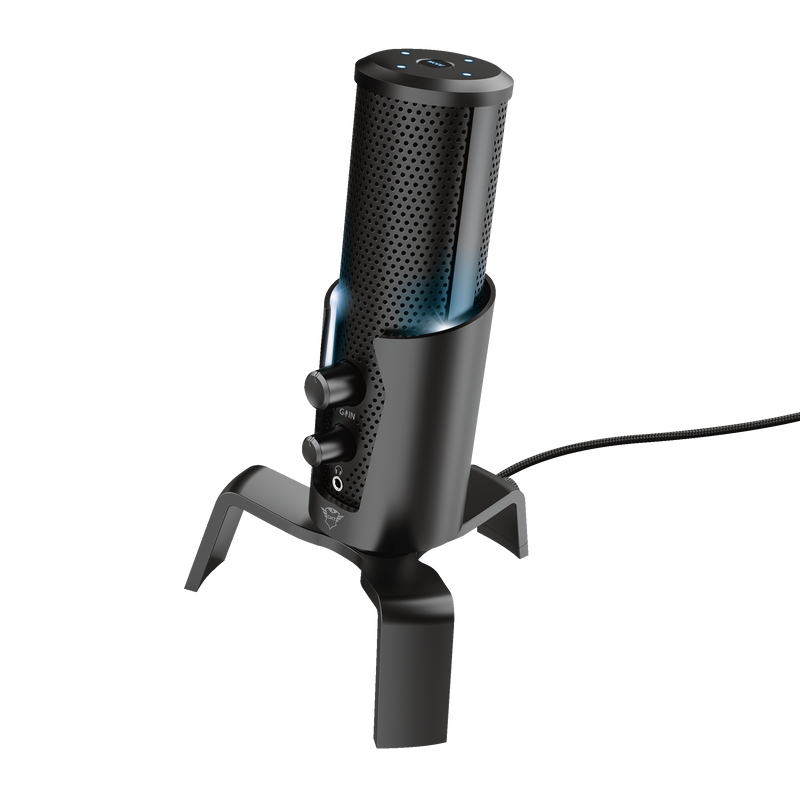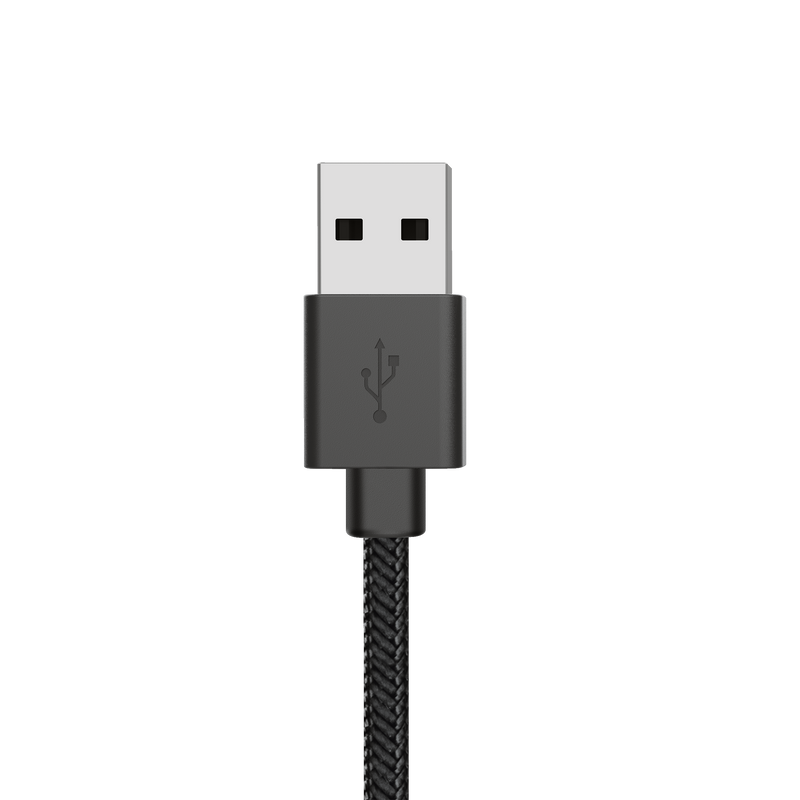Eccellente qualità del suono
Tra i vari fattori, il microfono utilizzato determina gli effetti più rilevanti sulle registrazioni. Deve riprendere voci e strumenti con la massima qualità possibile. Proprio per questo il microfono streaming Trust GXT 258 Fyru 4-in-1 è strutturato in modo da realizzare registrazioni cristalline e ricche, di qualità quasi pari a uno studio professionale.
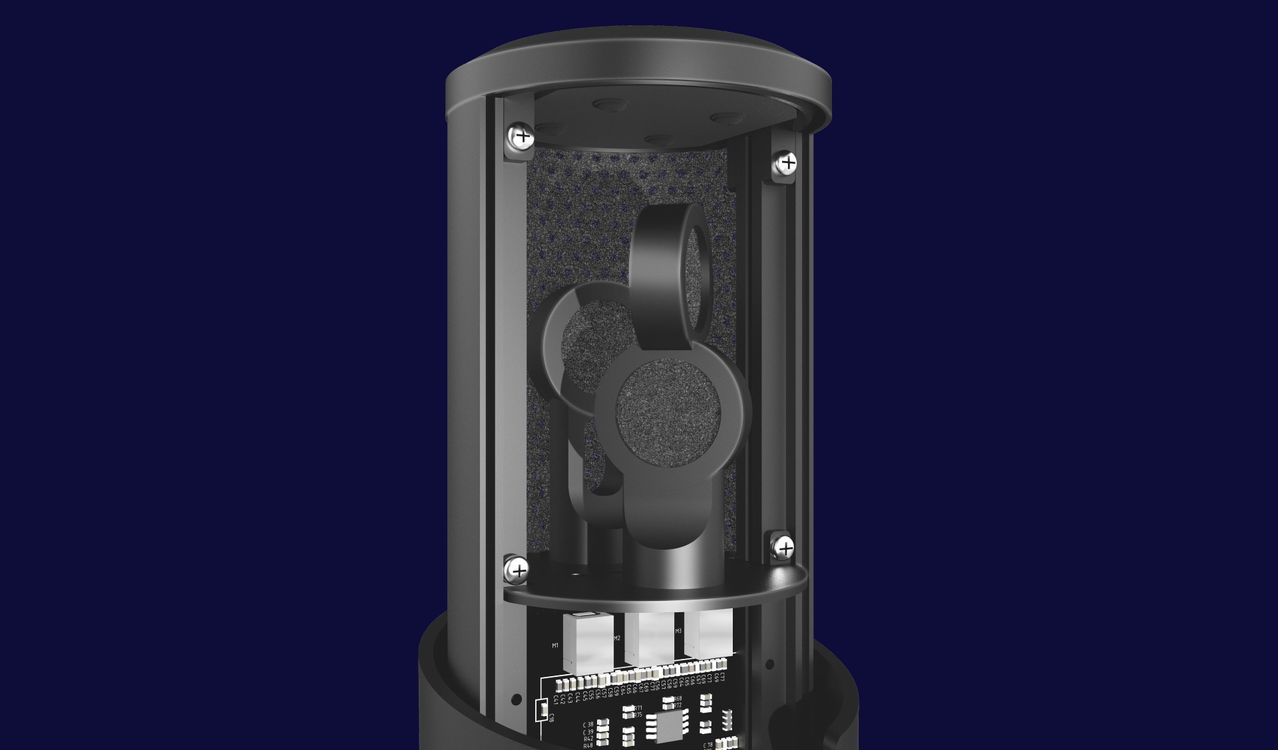
Funzionalità Principali
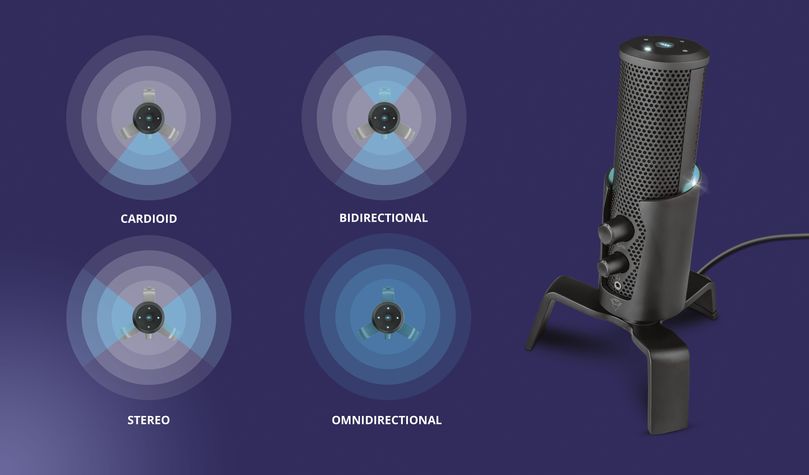
Per registrare secondo il proprio stile: 4 pattern diversi
Fyru consente di registrare in 4 modi diversi, ottimizzati per ciascuna situazione. Se occorre ottenere una registrazione chiara senza rumori di fondo, perfetto per i podcast di una persona sola, si può utilizzare il cardioide. Se si registra un duetto o si conduce un’intervista, è possibile optare per il bidirezionale. Stereo è il pattern da scegliere per registrazione un ambiente musicale stereo, oppure è possibile acquisire i suoni con il pattern omnidirezionale, perfetto, se si ospita un podcast di gruppo.
Funzioni professionali extra
Per perfezionare le registrazioni, è possibile ascoltarle in tempo reale, con la porta di monitoraggio cuffie a zero latenza di Fyru. Inoltre, è possibile regolare le impostazioni con comode manopole poste sulla parte anteriore del microfono, per il guadagno del microfono, l’esclusione audio e il volume delle cuffie. Il filtro pop interno, poi, filtra eliminando le occlusive e le fricative (suoni indesiderati dovute a lettere come la P e la F) per una registrazione anche più scorrevole.
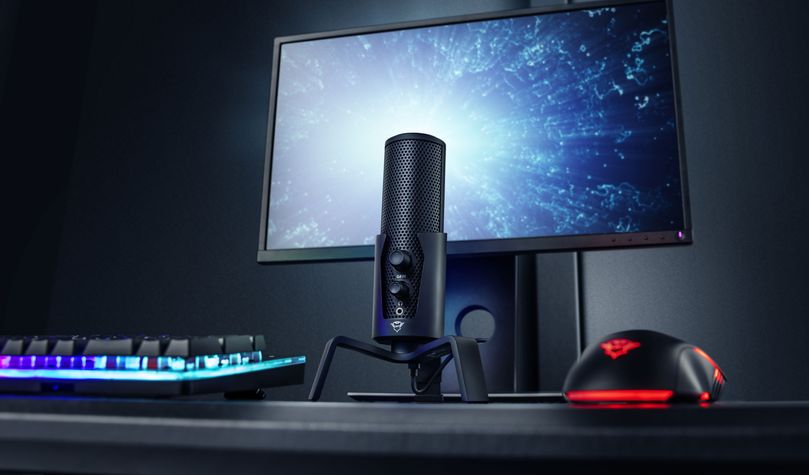
Specifiche
Features
Size & Weight
General
Control
Connectivity
Audio
Microphone
Mount
Compatibility
Ulteriori informazioni
Microfono con treppiede
Cavo da USB-C a USB-A
Manuale utente
Adesivo Gaming
PC o laptop con porta USB
Windows 10, 11 o Mac OS X 10.5 (Leopard) o versioni superiori
oppure
PS4™
Downloads
Dichiarazione di conformità
Version 1.0 | Multilingue
Dichiarazione di conformità
Dichiarazione di conformità UE
Version 1.0 | Multilingue
Dichiarazione di conformità UE
Domande frequenti (FAQ)
- Assemble the microphone and set it in your preferred position
- Connect the USB-plug to the USB-connection of the computer
- Set the microphone as the default sound input and the speaker as the default sound output device on the computer.
- Check the microphone properties and on Windows 10 the Microphone Privacy settings.
- The microphone is ready to use
By pressing the button on the bottom of the mic for 5 seconds, you switch the light off (this is called the Eco mode).
Please note that the mode-button will not switch off.
By pressing the button on the bottom of the mic, you can change the colour from blue to green to purple to yellow to white.
The best mode depends on the situation and your personal preference. In general we advise the following:
- Cardioid. Press the top button 1x, 1 indicator will be lit.
This is the preferred mode if you are sitting directly in front of the microphone, e.g. for gaming or live streaming. - Bi-directional. Press the top button 2x, 2 indicators will be lit (top and bottom).
This is the preferred mode if you are talking with another person, each on an opposite side of the microphone. - Stereo. Press the top button 3x, 2 indicators will be lit (left and right).
This is the preferred mode if you are playing an instrument, e.g. your guitar, in front of the microphone. - Omni-directional. Press the top button 4x, all 4 indicators will be lit.
This is the preferred mode if you are with a group of peope, located on all sides of the microphone.
You switch on/off the microphone by pressing the microphone volume button on the front.
If you want the music to be loud, but the monitor volume low, you turn the volume button on the microphone high, and keep the volume in the playback/mic levels low.
There are 5 volume options via this microphone
- 2 buttons on the microphone:
mic volume
headset/speaker volume - 3 options in Windows:
Sound Control Panel > Playback > click on device > Properties > Levels > Speakers/Headphones
Sound Control Panel > Recording > click on device > Properties > Levels > Microphone Array
Sound Control Panel > Recording > click on device > Properties > Levels > Microphone Boost
Check both the headset volume on the computer, as well as the headset volume on the microphone itself. The headset volume button is located on the front of the microphone, right above the headset connection.
Check both the microphone volume on the computer, as well as the microphone volume on the microphone. The microphone volume button is located on the front of the microphone, right above the headset volume button.
The standard microphone volume in Windows is 2.0 dB, which should be sufficient for most purposes.
The red light indicates that the mic mute function has been activated.
When mute is activated, the buttons will not function.
Le consiglio di chiedere la sostituzione dell'articolo direttamente dal rivenditore.
Nel caso in cui il prodotto sia difettoso, è possibile restituirlo al rivenditore insieme a una descrizione del tipo di malfunzionamento, alla prova d''acquisto e a tutti gli accessori.
Se il prodotto è ancora in garanzia, riceverete un prodotto sostitutivo (se disponibile) dal rivenditore.
Condizioni di garanzia:
https://www.trust.com/support/warranty
Xbox Series X / S non riconosce i microfoni USB. Pertanto questo microfono non è compatibile con Xbox Series X / S.
Questo microfono è stato progettato per l'uso con i computer e funzionerà anche su PS4/5.
Non è compatibile con Xbox One; per Xbox è necessaria una configurazione audio USB diversa.
È possibile utilizzare il braccio del microfono GXT 253 con i seguenti microfoni Trust:
- 21753 - GXT 252 Emita Streaming Microphone
- 22400 - GXT 252+ Emita Plus Streaming Microphone
- 22614 - GXT 242 Lance Streaming Microphone
- 23465 - GXT 258 Fyru USB 4-in-1 Streaming Microphone e 24257 - GXT 258W Fyru USB 4-in-1 Streaming Microphone
Note:
- this microphone fits the arm, but can't be mounted directly onto the shock mount. However with the included (with the microphone arm) adapter you can screw this microphone onto the arm.
- the integrated USB-B cable from the 22563 - GXT 253 Microphone Arm is not supported by the FYRU Microphone. - 23510 - GXT 256 Exxo USB Streaming Microphone
- 23466 - GXT 244 Buzz USB Streaming Microphone
The pick-up pattern of a microphone is the sensitivity to sound relative to the direction or angle from which the sound arrives, or how well the microphone "picks up" the sound from different directions. The most common types are: Cardioid, Omnidirectional, Unidirectional, Bidirectional.
CARDIOID
The most commonly used pattern is most sensitive at 0° (the front) and least sensitive at 180° (the back). This isolates it from unwanted ambient sound. You can use this for most recording applications. It is easy to get a good signal as the cardioid pattern blends out a bad sounding room, a noisy fan in the background, etc.
OMNIDIRECTIONAL
The omnidirectional microphone has equal sensitivity at all angles. This means it picks up sound evenly from all directions. Therefore, the microphone need not be aimed in a certain direction. It will be especially useful in good sounding rooms.
UNIDIRECTIONAL
Unidirectional microphones are most sensitive to sound arriving from directly in front (at 0°) and less sensitive in other directions. This makes unidirectional microphones effective at isolating the desired sound from both unwanted sound and ambient noise.
BIDIRECTIONAL
A bidirectional microphone (with figure-8 pattern) picks up the sound from in front of the microphone (at 0°) and from the rear (at 180°), but not the side (at 90° and 270°). It can be beneficial in situations where you do not want a signal coming from a 90° angle to bleed into the microphone.
The sample rate of this microphone is as follows:
- 96Khz for the 'playback' sound
- 48Khz for the 'recording' sound.
So if you connect your headset to the microphone, you can listen with 96Khz sample rate. But if you record, you record with max. 48Khz.
Contattaci
Contattaci
Per prima cosa controlla le nostre FAQ, è probabile che troverai la risposta lì.
Non hai trovato la risposta nelle domande frequenti? Compila il modulo sottostante con quante più informazioni possibili e uno dei nostri addetti all'help desk risponderà il prima possibile. I nostri messaggi ricevono risposta nell'ordine in cui vengono ricevuti.
Dopo aver inviato il modulo, verrà visualizzato un messaggio di conferma con il numero di riferimento. Questa conferma è stata inviata al suo indirizzo e-mail allo stesso tempo. Se non hai ricevuto questo messaggio, controlla la sua cartella spam o posta indesiderata. Se non riesci a trovare la conferma, si prega di inviare nuovamente il modulo con il suo indirizzo e-mail corretto.

